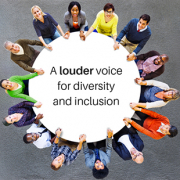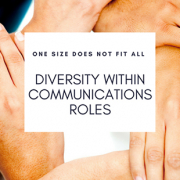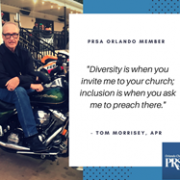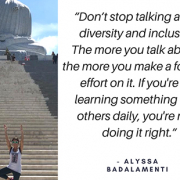Effectively reach key messages to audiences of all ages in a multimedia generation
By Alyssa Badalamenti, PRSA Diversity and Inclusion Chair
By now, everyone has replaced ‘millennials’ with ‘Gen X’ in their editorials, and millennials are looped in with the previous generations who grew into having negative stereotypes of the newest generation. Why is it that with every generation we get into this cycle of comparing habits and perceiving them to be negative? Why does it have to be this way? Often, I hear it’s because “they don’t understand.” As communicators, it’s our job to understand our audience, but how can we communicate properly if we don’t shape our messages for a diverse audience? Rather than writing the same way we always have because it makes sense to us, we could instead seek input from generations outside our own. How we work, communicate, and consume is different among generations. By understanding why we have differences and what they are, we can communicate more effectively to our audiences.
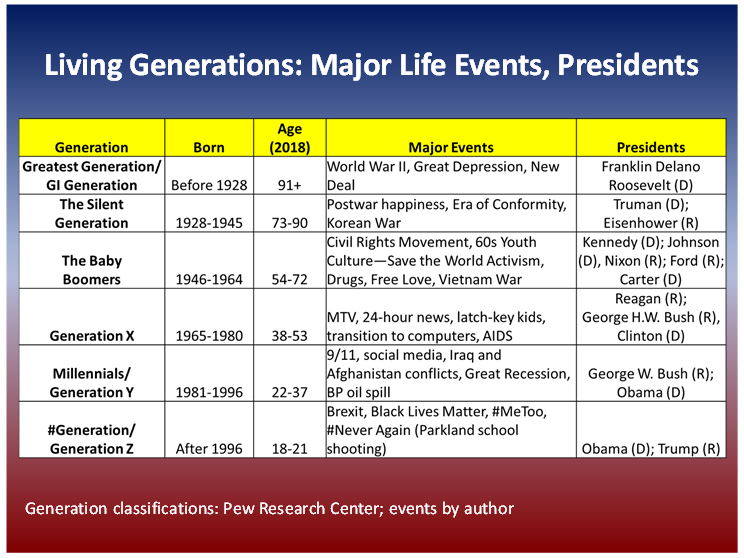 Take a look at this chart taken from Dr. Susan MacManus’ editorial column, “Shining the Spotlight on Florida’s Youngest Registered Voters: A Generational Approach.” In her column, Dr. MacManus writes, “Each generation is different demographically and in its exposure to various major economic, social, technological, and political events that can impact vote decisions.” Each generation has had its own shaped opinions based on major life events and the presidential office held. Each life event also holds different weight in terms of importance. Add on differences in race, gender, religion, etc…it’s no wonder why we often hear that “they just don’t understand.”
Take a look at this chart taken from Dr. Susan MacManus’ editorial column, “Shining the Spotlight on Florida’s Youngest Registered Voters: A Generational Approach.” In her column, Dr. MacManus writes, “Each generation is different demographically and in its exposure to various major economic, social, technological, and political events that can impact vote decisions.” Each generation has had its own shaped opinions based on major life events and the presidential office held. Each life event also holds different weight in terms of importance. Add on differences in race, gender, religion, etc…it’s no wonder why we often hear that “they just don’t understand.”
Jennifer J. Deal, a research scientist with the Center for Creative Leadership, argues that the generations now of working age value essentially the same things as older generations. “The so-called generation gap is, in large part, the result of miscommunication and misunderstanding, fueled by common insecurities and the desire for clout,” she says. It’s easy to understand that each generation has had different experiences and thus probably has a unique perspective to communications and how they represent their work and their organizations. And naturally through the growth of resources, technology and transparency, public relations is going through its own generational growth. However, public relations has essentially stayed the same in its core values and foundation of key messages. Public relations practitioners in any generation could benefit by understanding generational differences and seeing the value in working as part of a multigenerational team. We just need to ask the right questions.
By working with multigenerational teams, we can more effectively communicate by seeking input on how key messages come across to different generations. According to the Pew Research Center, there was a drop in media viewership from the last calendar year across most modes (newspaper, cable/network/local television, and digital-native news), with the exception of radio and social media. Communicators have always needed to be aware of how their audiences consume media and adapt to the changing trends; this is true for any generation. Communicators can be successful by understanding how each generation consumes media, and by using a variety of communication types to reach their target audience. Example: “Check it out” versus “You may find the video below;” It’s especially important for internal communicators when talking to employees of diverse age groups. Communicators would benefit from studying and/or talking to generations different than their own to ensure key messages reflect the audiences being communicated to. Just remember, one way of communication is not better than the other; they’re just different approaches to relaying the same key message to an audience that understands it better.




